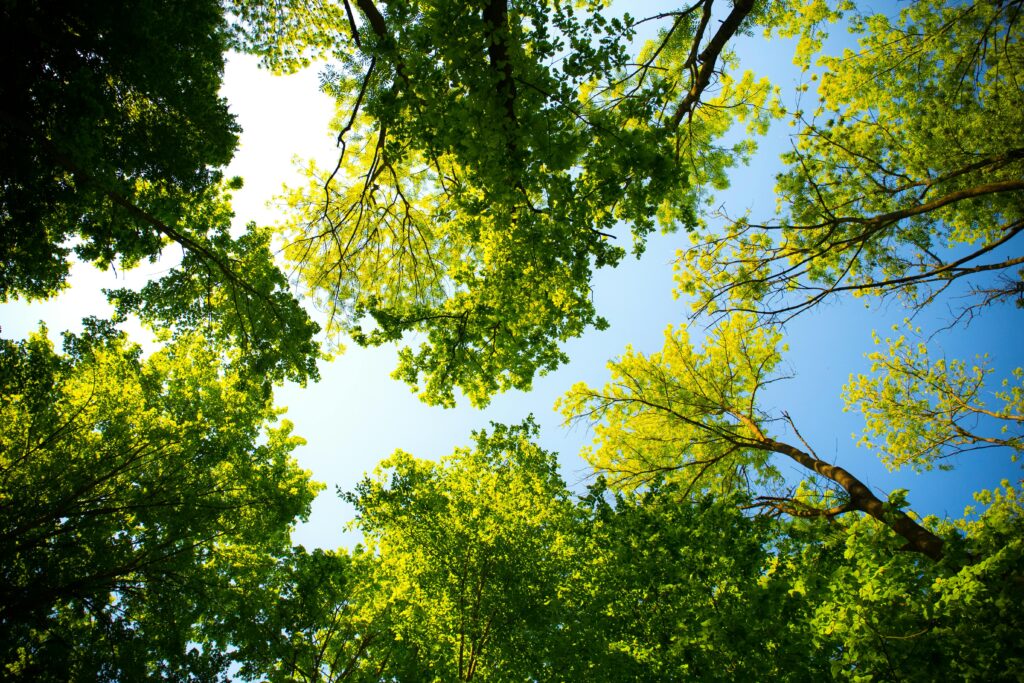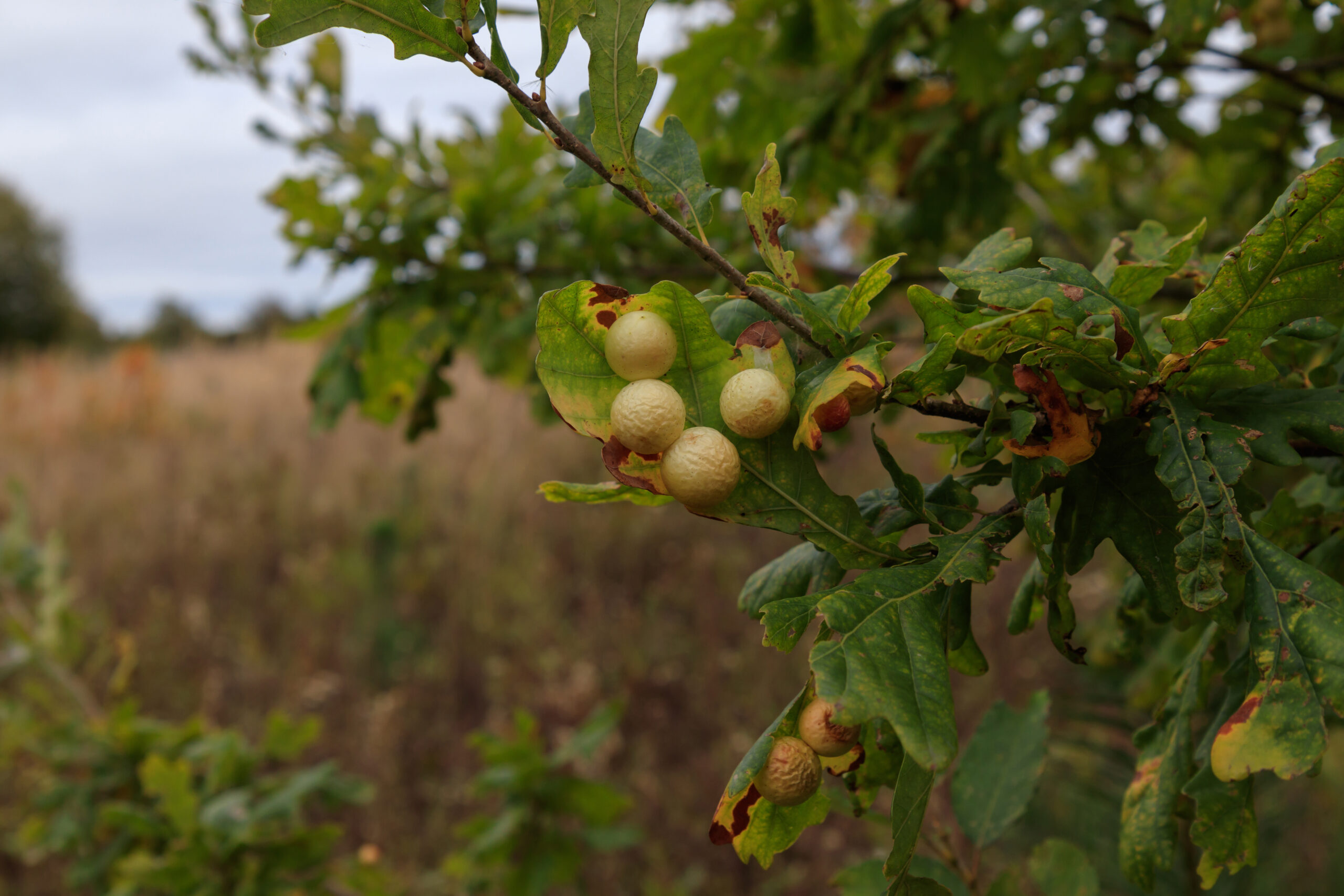Are you noticing strange growths on your oak trees? These unsightly bumps and knots could be a sign of oak gall disease. This year there have been a significant increase in the number of trees affected by oak call in St. Louis, especially pink oaks which were widely planted in our region during the 1950s and ’60s. Oak gall is more than just an eyesore; it can harm your trees if not properly treated. Let’s dive into what oak gall is, how to identify it, and what you can do about it.
What is Oak Gall?
Oak galls are abnormal growths or swellings on oak trees caused by various species of small gall wasps. When these tiny wasps lay their eggs on oak leaves, branches, or twigs, a chemical reaction stimulates the tree to produce these growths. Galls provide both food and protection for the developing wasp larvae.
Common Types of Oak Galls:
- Leaf Galls: Appear as round, spiky, or fuzzy balls on the leaves.
- Twig Galls: Hard, woody swellings on twigs and branches.
- Root Galls: Unusual formations found underground on the roots.
Signs Your Oak Tree Might Have Galls:
- Unusual Growths: Look for round, spiky, or bumpy growths on leaves, branches, or twigs.
- Leaf Damage: Leaves have holes or look irregular.
- Dying Trees: Infestations can weaken or even kill parts of the tree.
Why You Should Be Concerned: Severe infestations can damage trees, making them susceptible to other diseases and pests. In extreme cases, this can lead to significant branch dieback or even the death of the tree.
How G&G Lawn & Tree Can Help

At G&G Lawn & Tree, we offer comprehensive oak gall treatment services. Our experts can assess the extent of the infestation and recommend the best course of action. Treatments might include:
- Pruning: Removing and destroying infested branches to reduce the gall wasp population.
- Chemical Treatments: Applying appropriate insecticides to control wasp populations and prevent further gall formation.
- Tree Health Care: Improving overall tree health through proper fertilization and watering, making them more resilient to infestations. Infected trees can also be removed safely by our crews.
Our Proven Tree Care Process:
- Inspection: Thorough assessment of your oak trees to identify the presence and severity of galls.
- Treatment Plan: Customized plan to address the specific type of gall and infestation level.
- Implementation: Skilled application of treatments by our certified arborists.
- Follow-Up: Monitoring and follow-up visits to ensure the treatment’s effectiveness can be scheduled.
Alternatives to Oak Trees: Native Missouri Trees to Consider
If your oak trees are severely affected or if you’re looking to diversify your landscape, consider planting these alternative native Missouri trees:
- Eastern Redbud (Cercis canadensis): Beautiful pink flowers in spring, heart-shaped leaves, and minimal maintenance.
- American Hornbeam (Carpinus caroliniana): Attractive blue-green leaves that turn vibrant shades in fall, great for small yards.
- Serviceberry (Amelanchier arborea): White spring blossoms, edible berries, and brilliant fall color.
- Missouri Pecan (Carya illinoinensis): Provides shade and produces delicious nuts.
- Sugar Maple (Acer saccharum): Famous for its vibrant fall foliage and syrup production.
These trees are not only resistant to oak gall but also support local wildlife and enhance the beauty of your landscape.


